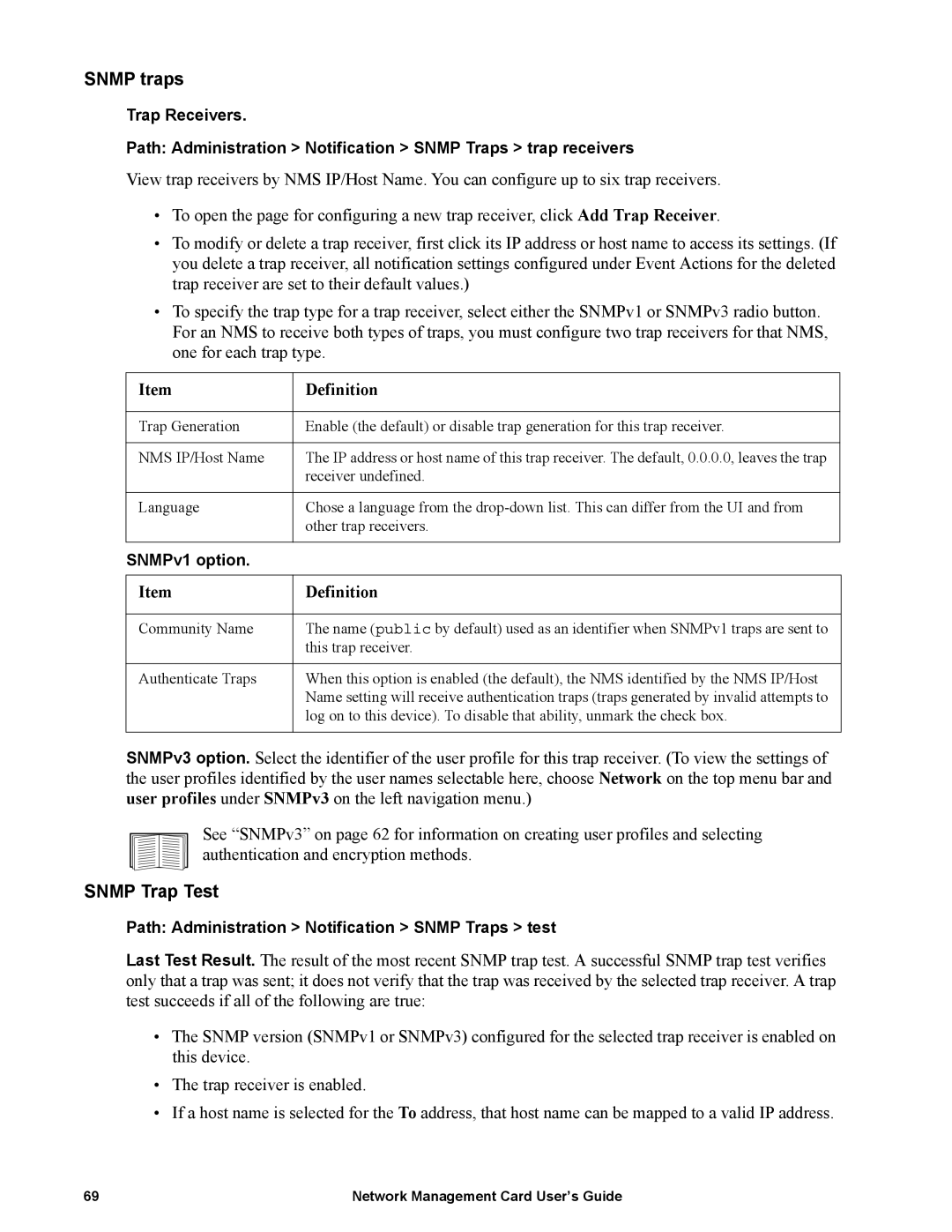SNMP traps
Trap Receivers.
Path: Administration > Notification > SNMP Traps > trap receivers
View trap receivers by NMS IP/Host Name. You can configure up to six trap receivers.
•To open the page for configuring a new trap receiver, click Add Trap Receiver.
•To modify or delete a trap receiver, first click its IP address or host name to access its settings. (If you delete a trap receiver, all notification settings configured under Event Actions for the deleted trap receiver are set to their default values.)
•To specify the trap type for a trap receiver, select either the SNMPv1 or SNMPv3 radio button. For an NMS to receive both types of traps, you must configure two trap receivers for that NMS, one for each trap type.
Item | Definition |
|
|
Trap Generation | Enable (the default) or disable trap generation for this trap receiver. |
|
|
NMS IP/Host Name | The IP address or host name of this trap receiver. The default, 0.0.0.0, leaves the trap |
| receiver undefined. |
|
|
Language | Chose a language from the |
| other trap receivers. |
|
|
SNMPv1 option. |
|
|
|
Item | Definition |
|
|
Community Name | The name (public by default) used as an identifier when SNMPv1 traps are sent to |
| this trap receiver. |
|
|
Authenticate Traps | When this option is enabled (the default), the NMS identified by the NMS IP/Host |
| Name setting will receive authentication traps (traps generated by invalid attempts to |
| log on to this device). To disable that ability, unmark the check box. |
|
|
SNMPv3 option. Select the identifier of the user profile for this trap receiver. (To view the settings of the user profiles identified by the user names selectable here, choose Network on the top menu bar and user profiles under SNMPv3 on the left navigation menu.)
See “SNMPv3” on page 62 for information on creating user profiles and selecting authentication and encryption methods.
SNMP Trap Test
Path: Administration > Notification > SNMP Traps > test
Last Test Result. The result of the most recent SNMP trap test. A successful SNMP trap test verifies only that a trap was sent; it does not verify that the trap was received by the selected trap receiver. A trap test succeeds if all of the following are true:
•The SNMP version (SNMPv1 or SNMPv3) configured for the selected trap receiver is enabled on this device.
•The trap receiver is enabled.
•If a host name is selected for the To address, that host name can be mapped to a valid IP address.
69 | Network Management Card User’s Guide |
